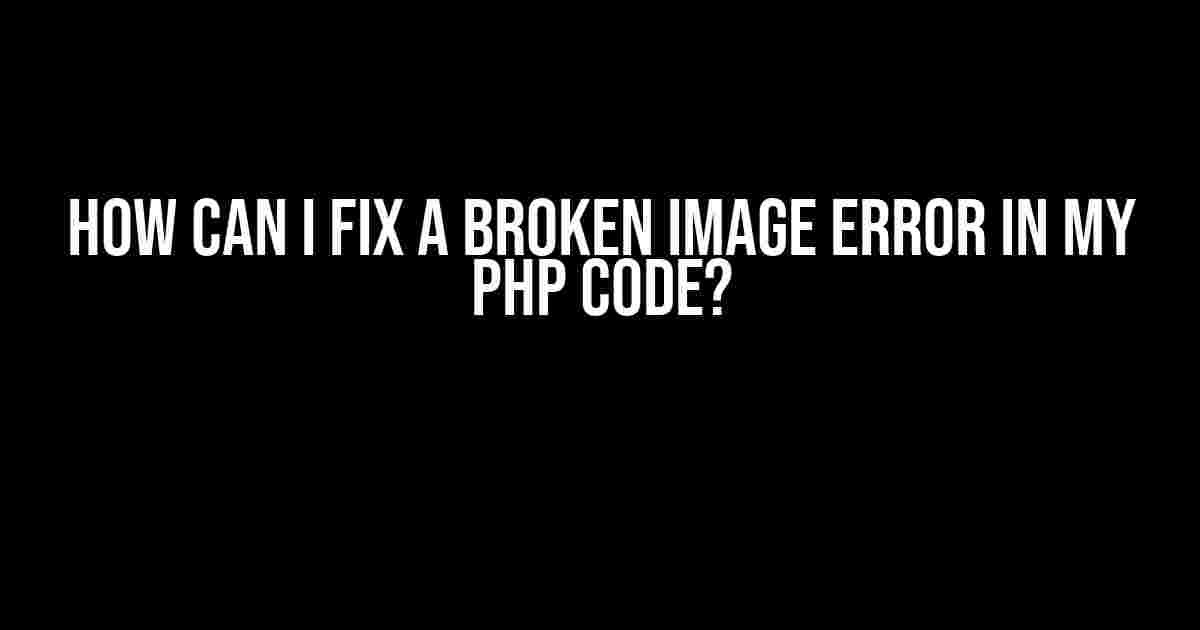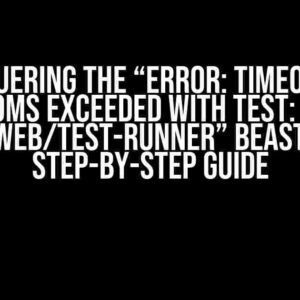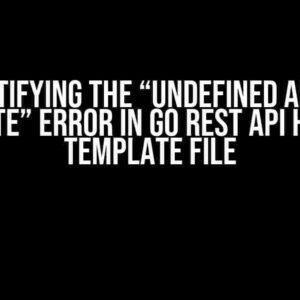Are you tired of seeing that annoying broken image icon on your website? Do you want to know the secret to fixing that pesky error and getting your images to display properly? Well, you’re in luck because today we’re going to dive into the world of PHP and image handling to show you exactly how to fix a broken image error in your PHP code!
What Causes Broken Image Errors?
Before we dive into the fix, let’s take a step back and understand what causes broken image errors in the first place. There are a few common culprits:
- Incorrect File Paths: If your PHP code is trying to access an image file that doesn’t exist or is located in the wrong directory, you’ll get a broken image error.
- Permission Issues: If the web server doesn’t have the necessary permissions to read the image file, it won’t display properly.
- File Type Mismatches: If the file type specified in your PHP code (e.g.
.jpg) doesn’t match the actual file type of the image, you’ll get a broken image error. - Server Configuration Issues: Sometimes, server configuration issues or misconfigured MIME types can cause broken image errors.
Identifying the Problem
So, how do you identify the problem? Here are some steps to help you troubleshoot:
- Check the File Path: Double-check that the file path specified in your PHP code is correct and the image file exists in that location.
- Verify File Permissions: Make sure the web server has the necessary permissions to read the image file. You can do this by setting the file permissions to 755 or 644 using an FTP client or file manager.
- Check File Types: Verify that the file type specified in your PHP code matches the actual file type of the image.
- Inspect the Image File: Open the image file in a image editing software to ensure it’s not corrupted or damaged.
Fixin’ It!
Now that we’ve identified the problem, it’s time to fix it! Here are some solutions to common broken image error scenarios:
Scenario 1: Incorrect File Paths
If you’re using a relative file path to access the image, try switching to an absolute path instead:
<img src="/images/image.jpg" alt="Image">This ensures that the file path is correct and the web server can access the image file.
Scenario 2: Permission Issues
If the web server doesn’t have permission to read the image file, try setting the file permissions to 755 or 644 using an FTP client or file manager:
| File Permission | Description |
|---|---|
| 755 | RWX-R-X (Owner has read, write, and execute permissions. Group has read and execute permissions. Others have read and execute permissions) |
| 644 | RW-R– (Owner has read and write permissions. Group has read permission. Others have read permission) |
Scenario 3: File Type Mismatches
If the file type specified in your PHP code doesn’t match the actual file type of the image, try using the mime_content_type() function to get the correct MIME type:
$image_path = 'images/image.jpg';
$image_mime_type = mime_content_type($image_path);
<img src="" alt="Image" type="">This ensures that the correct MIME type is specified, and the web server can serve the image properly.
Scenario 4: Server Configuration Issues
If you’re using a server-side scripting language like PHP, make sure that the server is configured to handle the image file type correctly. You can do this by adding the following lines to your .htaccess file:
AddType image/jpeg .jpg .jpeg .jpe
AddType image/png .png
AddType image/gif .gifThis ensures that the server is configured to handle common image file types correctly.
Best Practices for Handling Images in PHP
To avoid broken image errors in the future, follow these best practices for handling images in PHP:
- Use Absolute File Paths: Use absolute file paths to ensure that the file path is correct and the web server can access the image file.
- Verify File Existence: Use the
file_exists()function to verify that the image file exists before trying to display it. - Check File Permissions: Make sure the web server has the necessary permissions to read the image file.
- Use the Correct MIME Type: Use the
mime_content_type()function to get the correct MIME type for the image file. - Optimize Image Files: Optimize image files by compressing them using tools like TinyPNG or ImageOptim to reduce file size and improve page load times.
Conclusion
And there you have it! With these tips and tricks, you should be able to fix broken image errors in your PHP code and display images properly. Remember to identify the problem, fix it, and follow best practices to avoid broken image errors in the future. Happy coding!
Frequently Asked Question
Are you stuck with a broken image error in your PHP code and don’t know where to start?
What are the common causes of a broken image error in PHP?
A broken image error in PHP can occur due to various reasons, including incorrect file paths, missing or corrupted image files, incorrect MIME types, or even server-side issues like misconfigured Apache or PHP settings. It’s essential to identify the root cause before attempting to fix the issue.
How can I check if the image file exists and is not corrupted?
Use the PHP `file_exists()` function to check if the image file exists, and `getimagesize()` to verify that the file is a valid image. You can also use `is_readable()` to ensure the file is readable. Additionally, try opening the image file in a browser or image viewer to check if it’s corrupted.
What if the issue is related to incorrect file paths or URLs?
Double-check your file paths and URLs to ensure they are correct and relative to the correct directory. Use the PHP `dirname()` function to get the directory path, and `realpath()` to get the absolute path. You can also use Online Tools to verify the image URL.
How can I optimize my PHP code to prevent broken image errors?
Use PHP error handling functions like `error_reporting()` and `set_error_handler()` to catch and handle errors. Implement a try-catch block to wrap your image-related code. Consider using a CDN or caching mechanism to reduce the load on your server and minimize errors.
What are some best practices to prevent broken image errors in the future?
Regularly update your PHP and server software, use version control to track changes, and test your code thoroughly before deployment. Consider using a code analyzer or linter to identify potential issues early on. Finally, maintain a backup of your files and database to ensure business continuity in case of errors.




